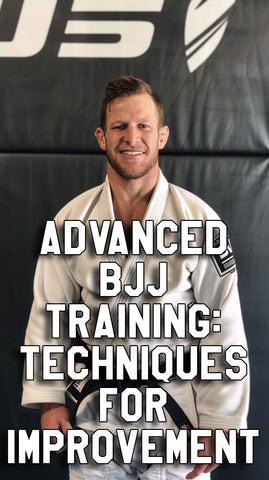Advanced BJJ Training: Techniques for Improvement
Advancing to a higher level in Brazilian Jiu-Jitsu (BJJ) requires a strategic and focused approach to training. Whether you aim to refine your techniques, gain a competitive edge, or attain a higher belt rank, incorporating advanced training techniques is essential. Here are key strategies for improving your skills in advanced BJJ training:
-
Specialized Drilling:
Integrate specialized drilling into your training routine. Focus on specific positions, transitions, or submissions that align with your goals. Specialized drilling enhances muscle memory and refines technique. -
Positional Sparring:
Incorporate positional sparring sessions. Instead of free sparring, start in specific positions and work on both offensive and defensive strategies. This targeted approach allows you to concentrate on improving specific aspects of your game. -
Live Situational Training:
Engage in live situational training scenarios. Simulate common situations that arise during competitions or sparring sessions. This approach sharpens your ability to make quick decisions and execute techniques in specific contexts. -
Competition Simulation:
Simulate competition conditions during training. Set time limits for rounds, have a referee enforce rules, and create an environment that closely mirrors the intensity of actual competitions. This prepares you mentally and physically for the challenges of tournaments. -
Advanced Submission Chains:
Develop advanced submission chains by linking multiple techniques seamlessly. Practice transitioning between submissions based on your opponent's reactions. This strategic approach increases your submission options and keeps your opponent guessing. -
Study Opponents' Games:
Analyze and study the games of high-level BJJ practitioners. Identify techniques, strategies, and movements that align with your style. Incorporate elements from different game styles to expand your repertoire. -
Flow Rolling:
Incorporate flow rolling into your training sessions. Flow rolling emphasizes smooth transitions and controlled movements, allowing you to experiment with new techniques and improve your fluidity on the mats. -
Video Analysis:
Record and analyze your sparring sessions and competition performances. Video analysis provides valuable insights into your strengths, weaknesses, and areas for improvement. Use this feedback to refine your approach. -
Cross-Train in Related Disciplines:
Cross-train in related disciplines such as judo, wrestling, or even striking arts. Integrating techniques from complementary martial arts enhances your overall skill set and makes you a more well-rounded practitioner. -
Advanced Guard Passing Sequences:
Develop advanced guard passing sequences that involve a combination of speed, timing, and deception. Experiment with various grips and pressure points to break down your opponent's guard effectively. -
Escapes under Pressure:
Work on escapes under pressure situations. Put yourself in disadvantageous positions during sparring and focus on escaping using technical and efficient movements. This enhances your ability to navigate challenging situations during competitions. -
Conditioning for Explosiveness:
Include explosive conditioning drills in your training. Develop explosive movements to gain an advantage in scrambles and capitalize on opportunities during sparring. Explosive conditioning enhances your overall athleticism. -
Mental Toughness Training:
Train your mental toughness by putting yourself in challenging situations and maintaining composure. Develop the ability to stay focused and make strategic decisions even when fatigued or under pressure. -
Strategy Development:
Develop advanced strategies for different opponents. Tailor your game plan based on your opponent's strengths and weaknesses. Understanding strategic nuances enhances your ability to dictate the pace of a match. -
Teaching and Leadership Roles:
Take on teaching roles within your gym. Teaching techniques and leading drills not only reinforces your understanding of BJJ but also provides a new perspective on the art. Leadership roles contribute to your growth as a practitioner.
Advanced BJJ training goes beyond mastering techniques; it involves a holistic approach that includes strategic thinking, mental toughness, and continuous learning. By incorporating these advanced training techniques into your regimen, you'll elevate your skills and navigate the intricate dynamics of advanced-level BJJ with confidence and proficiency.

